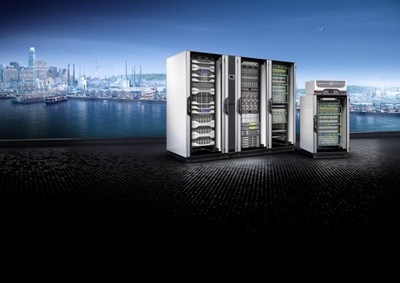By Rittal on 26-Oct-2021 12:27:28

Article appeared in Technology Decisions and Gov Tech online newsletters on Friday, 01 October, 2021
Whether you’re talking about in-house data centre operators, colocation providers or hyperscale providers — everyone needs to adapt to the onward march of digitalisation. Accelerated innovation cycles in all sectors, the ongoing digitalisation of production and ultra-fast 5G mobile networks are just some of the many factors that are driving the growth of data. The challenge for IT experts is that data centres are processing more data and need to adapt faster than was previously the case. However, the volume of data is not the only issue that needs to be addressed in strategic IT planning. There is also a greater need for specialised data centres designed to meet the needs of real-time data processing, for instance. This development is being driven by, among other things, fast 5G networks and the Internet of Things in highly automated environments.
The challenges for IT experts are larger volumes of data, faster adaptation of data centres and customised structures.
Anyone who is designing a new data centre should align it as closely as possible with its planned usage, whilst at the same time thinking about how to make it fit for the future. In smart environments, for example, thousands of sensors generate huge streams of data that require on-site edge data centres where preliminary processing can be carried out. Downstream cloud data centres then evaluate the relevant status so that the service intervals for machines can be optimised based on long term analysis. Furthermore, these cloud data centres are essential for the entire customer interface from order through to invoice, but also need data from production so that delivery dates can be communicated transparently. Similarly, material supplies are linked in via procurement.
Each of these data centres has specific requirements for IT cooling systems, power supplies, scalability, security and monitoring. Using a modular concept ensures systems will be able to cope moving forward, even in the face of these varying requirements.
In the future, IT managers will be working much more with distributed IT landscapes, as companies need specialised data centres for their sites. In this new world, the roles of all the various market players are changing. Colocation providers are transforming from a replaceable supplier into a valuable partner that supports its customers’ operational business by running IT solutions on a cost-effective basis. The operators of hyperscale data centres have their sights very firmly set on cost and energy efficiency, since they still see themselves as pioneers for flexible cloud models and as-a-service models. CIOs, meanwhile, who are responsible for running in-house IT systems, are under growing pressure from specialist departments. Indeed, these departments have long since discovered that IT is a driving force for innovation, enhanced process efficiency and improved customer reach — and they are quick to demand new IT solutions. In all these cases, responsible IT managers face the challenge of having to build a future-proof and adaptive IT infrastructure.
The challenge — building a future-proof and adaptive IT infrastructure.
The modular RiMatrix NG IT infrastructure platform helps IT organisations drive the digital revolution of classic IT and operational technology (OT) with an open platform.
RiMatrix NG — the solution approach
The concept behind RiMatrix Next Generation
Nobody who needs a new data centre right now can say how IT requirements will change in the next three, five or ten years. Nonetheless, the planned investment in the new data centre should still provide some certainty — the certainty that the core elements of the IT infrastructure will endure and be flexible enough to meet previously unknown requirements. Experience has shown that the innovation cycles of server and storage systems are considerably shorter than those of the data centre infrastructure that surrounds them. Maximising the flexibility and modular configuration of this infrastructure helps enable organisations to meet future requirements.

Figure 1: The new RiMatrix NG open modular platform from Rittal — the flexible, reliable, fast and future-proof approach to building IT infrastructure.
RiMatrix NG is an open modular system that enables IT managers to successfully design their IT landscape of the future.
It uses standardised system technology that is configured on a modular basis, which helps ensure new data centres in all output categories can be implemented quickly and without risks.
Elements such as IT racks, uninterruptible power supply (UPS) systems and power distribution units (PDUs) for power backup and reticulation, energy-efficient IT cooling, and DCIM based monitoring are just some of the components in RiMatrix NG. New data centres can be established quickly, reliably and with excellent flexibility, from small single rack installations and edge data centres to enterprise, colocation and hyperscale data centres.

Figure 2: A modular approach for the right solution. RiMatrix NG includes modules for five functional areas — racks, climate control, power supply and back- up, IT monitoring and security — that can be planned on a customised basis.
Design
Even in the early stages of a project, customers can draw on the support of experts from Rittal, who can assist with the concept development and design for the desired data centre. One option is CFD analysis, which uses computational fluid dynamics methods to visualise the movement of air currents, even as early as the planning stage.
This ensures an appropriate cooling solution is selected, identifies hotspots and adds detail to the TCO costing. This is also the stage when suitable solution components are chosen and investment (CAPEX) and operating costs (OPEX) are calculated.
Implementation
Rittal assists on site with the construction of the physical infrastructure such as racks and power supply, cooling, monitoring and security systems. The next stage is the commissioning and sign-off of the data centre.
Optimisation
Rittal analyses the efficiency, cost, sustainability and scalability of the installed solution so it can identify areas where the IT landscape can be optimised. This ensures the infrastructure always keeps pace with the state of the art and operates at maximum energy efficiency.




comments